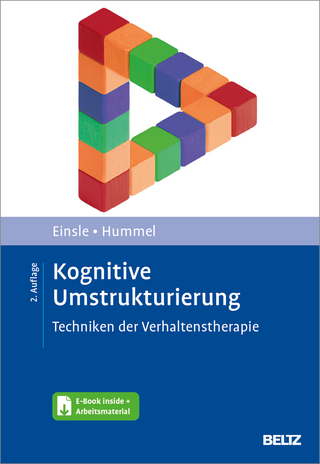
Training in Motion
Amacom (Verlag)
978-0-8144-3494-9 (ISBN)
Whether your employees are stuck behind a desk or having to sit through another meeting, chances are they are being kept from moving around most of the workday. This is resulting in restless bodies, wavering attention spans, and--based on the latest neuroscience research--decreased learning and productivity. Managers desiring to maximize their employees’ productivity and reach new levels of success for the company would be wise to not ignore the innate human desire for motion.
In Training in Motion, learn how to:
Tie lessons to movement in order to reinforce concepts
Manage learners’ physical and emotional states to increase engagement and bolster memory
Use posture, physical gestures, and other movements to command interest
Employ quick physical breaks to efficiently refocus your team
Turn lackluster meetings into high-achieving learning environments
Complete with practical, easy-to-apply activities, Training in Motion will help you add an almost universally untapped component to your training and managing methods that will provide your office environment the winning edge you’ve been searching for.
MIKE KUCZALA is President of Kuczala Consulting and the Director of Instruction for the Regional Training Center, an educator development firm. He has designed or co-designed three of the most successful courses in RTC's history-all incorporating movement into training.
Contents
Foreword
Preface
Acknowledgments
SECTION 1 THE CONNECTION THAT MOVES YOU
1 Connecting Movement to a Learning Brain
Making a Connection
Brain Basics
Key Concepts
2 Training With the Brain in Mind
Why Movement Creates Engagement
Eight Brain Principles You Need to Know
Long-Term Memory
The Limits of Memory
Six Long-Term Memory Techniques
The Brain/Body Connection
Implication for Training
Key Concepts
Eight Brain Principles Worksheet
Notes
3 Applying the Benefits of Movement
Worst of Times
What Trainers Should Do
Learning That Engages
Eight Ways Movement Enhances the Training Process
Attention Span and Training
What Movement Can Accomplish
Four Purposes of Movement in Training
Decided When to Use Movement
Rest of the Story
Key Concepts
Benefits of Movement Worksheet
SECTION 2 MOVEMENT ACTIVITIES FOR TRAINING
4 Brain-Break Activities
The Goals of a Brain Break
How the Brain Works
Bridging Engagement Barriers
The Best Time to Use Brain Breaks
18 Partner Brain-Break Activities
Summary
Key Concepts
18 Brain-Break Principles Worksheet
Note
5 Team-Building Activities
Emotional Connections and Long-Term Memory
10 Team-Building Activities
Key Concepts
10 Team-Building Activities Worksheet
Notes
6 Content-Review Activities
Five Content-Review Activities
Key Concepts
Content-Review Activities Worksheet
SECTION 3 THE BIG PICTURE
7 The Kinesthetic Presenter
Sensory Experience and Nonverbal Messages
Three Key Kinesthetic Presentation Techniques
Five Hand Habits That Send the Wrong Message
What to Do With Your Hands
How to Be a Confident Kinesthetic Presenter
and Trainer
Key Concepts
Kinesthetic Presenter Principles Worksheet
Notes
8 Why Movement Is a Powerful Learning Tool
The Body Is an Efficient Learning Tool
Education and Training
Other Benefits of Movement: Corporate Wellness
Notes
APPENDIX
1 Glossary
2 Worksheets and Handouts
3 Other Resources
Index
About the Author
| Erscheint lt. Verlag | 22.3.2018 |
|---|---|
| Sprache | englisch |
| Maße | 184 x 235 mm |
| Gewicht | 466 g |
| Themenwelt | Geisteswissenschaften ► Psychologie ► Allgemeine Psychologie |
| Geisteswissenschaften ► Psychologie ► Verhaltenstherapie | |
| Sozialwissenschaften ► Pädagogik | |
| Wirtschaft ► Betriebswirtschaft / Management ► Unternehmensführung / Management | |
| ISBN-10 | 0-8144-3494-0 / 0814434940 |
| ISBN-13 | 978-0-8144-3494-9 / 9780814434949 |
| Zustand | Neuware |
| Informationen gemäß Produktsicherheitsverordnung (GPSR) | |
| Haben Sie eine Frage zum Produkt? |
aus dem Bereich


